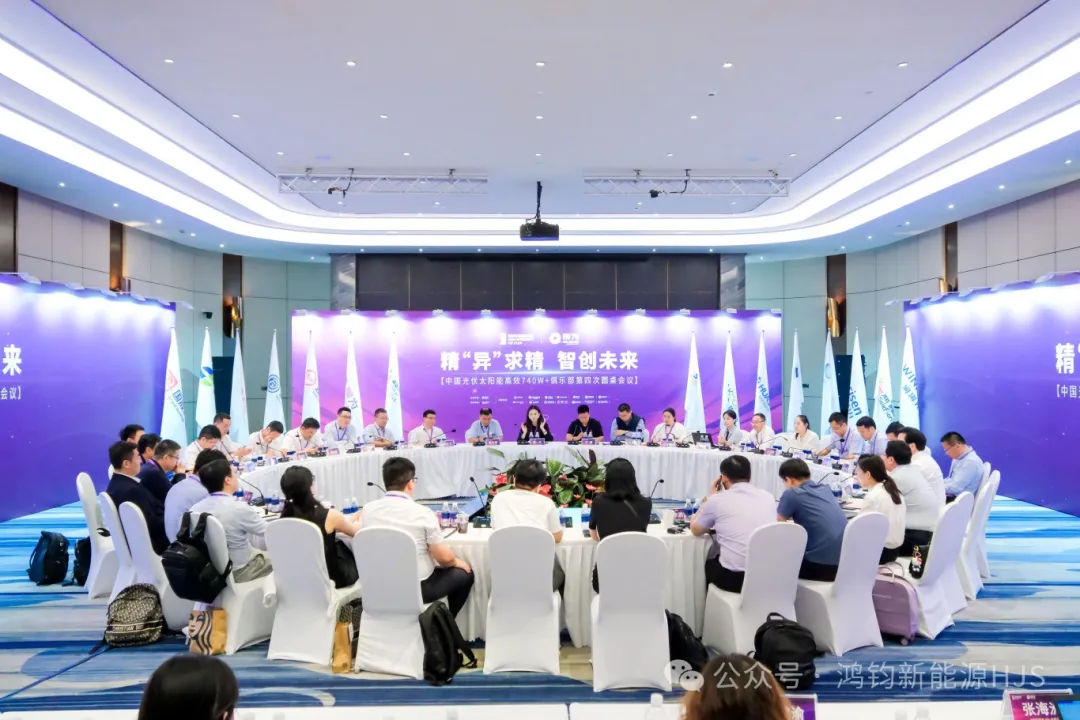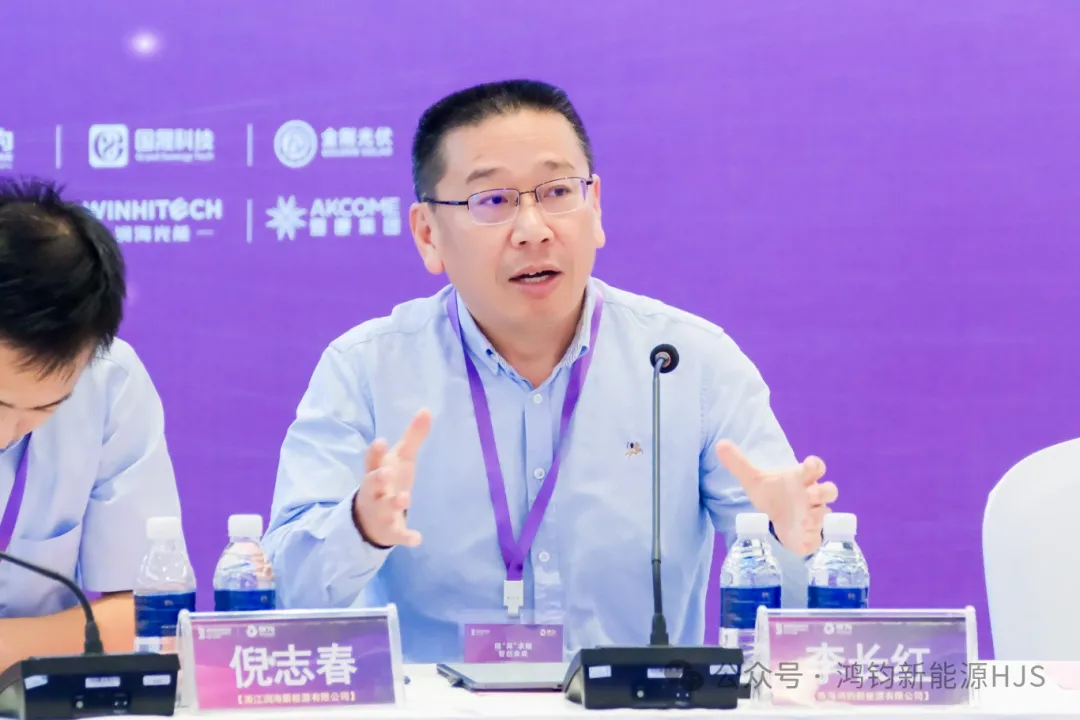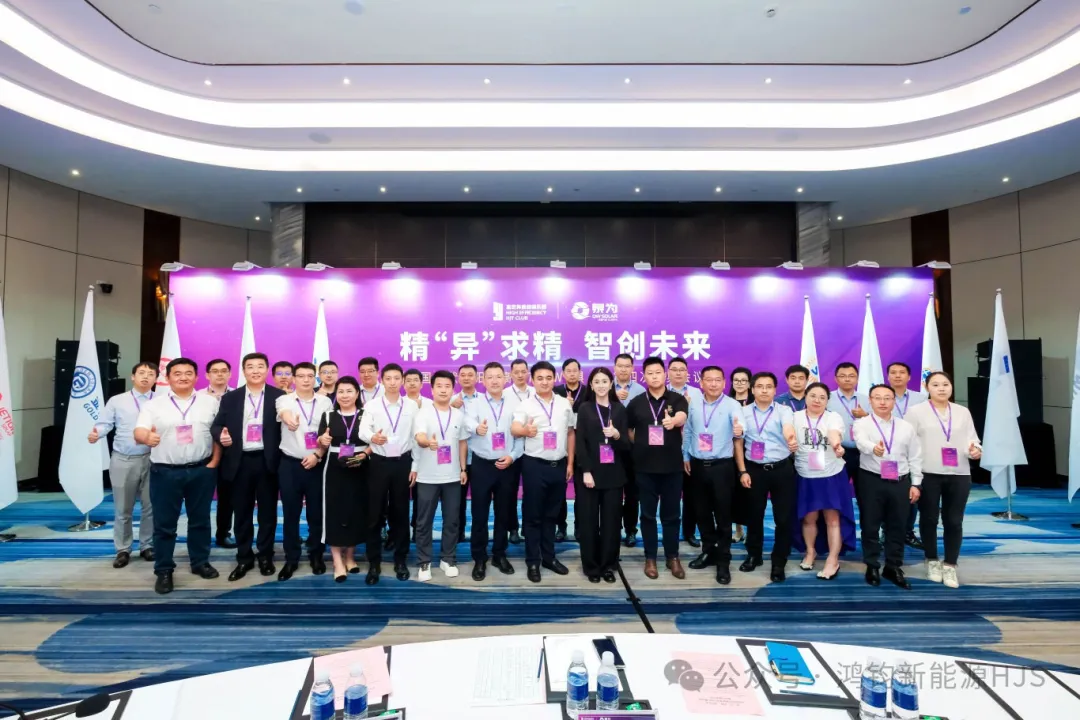Successful Conclusion of the 4th Roundtable Meeting of the High-Efficiency HJT 740W+ Club: Collaborating on Technological Innovation and Industry Development
In the rapid development of China's photovoltaic industry, Heterojunction Technology (HJT) has emerged as a rising star, gradually leading the future of green energy with its outstanding efficiency and potential. On July 19, 2024, the Fourth Roundtable Meeting of the High-Efficiency HJT 740W+ Club was successfully held in Shanghai. The meeting gathered industry elites from the HJT field, who came together to deeply analyze topics such as industry development, market policies, technological trends, and to make forward-looking plans for the future of HJT technology.
Pursuing Excellence, Leading the Future
The Fourth Roundtable Meeting of the High-Efficiency HJT 740W+ Club was chaired by Quenwei Technology. The event brought together thirteen HJT industry leaders, including Anhui Guoshin Energy, Anhui Huasheng New Energy, Dongfang Risheng, Guangdong Mingyang Solar, Guangdong Quenwei Technology, Guosheng Shian Technology, Kingkong Photovoltaic, Liansheng Photovoltaic, Shanghai Electric, Tongwei Co., Ltd., China National Building Material Group (CNBM) Xunxin, Zhejiang Runhai New Energy, and Solefiori Technology Company (listed in alphabetical order by their Chinese initials), as well as top experts in the field. The discussions focused on key issues such as the formulation of testing standards for HJT technology, development strategies, policy guidance, cost optimization, efficiency improvement, information exchange on Topcon technology, and 0BB technology. Participants actively shared insights and explored new paths for technological innovation and market expansion, injecting new vitality into the widespread application and commercialization of HJT technology.

Building Standards Together
Precise Testing Drives Healthy Industry Growth
As an emerging photovoltaic cell technology, HJT has only recently started mass production, and research on its performance evaluation and testing methods is still insufficient. This has led to discrepancies in testing standards among different institutions, with concerns that HJT power testing standards are too low. There is a pressing need to introduce new, more precise, and industry-relevant testing standards and demonstration rates. This is a challenge that requires collective efforts from industry stakeholders to resolve, through enhanced collaboration, improved testing capabilities, stronger regulatory enforcement, and promotion of technological innovation, thus driving the healthy and orderly development of HJT technology.
The event invited Li Weichun, Vice President of Global Power Electronics Services and General Manager of Solar and Commercial Products Services for Greater China at TÜV Rheinland, Gao Qi, Technical Expert in Solar and Commercial Products Services at TÜV Rheinland Greater China, and Xiong Limin, Chief Metrologist at the National Institute of Metrology of China, to share the latest testing and certification standards.
During the meeting, Xiong Limin discussed the challenges in testing the power of HJT modules, noting that issues such as metastability often occur in HJT module power tests. He hoped more companies would collaborate with the National Institute of Metrology of China to conduct experiments and collect more data, with the aim of quickly establishing Chinese national standards, industry standards, and group standards.
Li Weichun from TÜV Rheinland emphasized that HJT is the most promising mature technology in terms of innovation. He urged the industry to work together to validate and demonstrate the true potential of HJT technology. He highlighted the need to unify performance and power measurement standards and to ensure the reliability and long-term stability of HJT technology in practical applications.
Gao Qi further elaborated that TÜV Rheinland would offer a range of integrated HJT measurement and testing solutions to promote the development of this technology. They would also focus on improving market recognition of HJT technology and help companies and products gain the market position and trust they deserve through professional testing and certification services.
Dongfang Risheng's Product Center Director, Song Yifeng, mentioned that unifying HJT testing standards would greatly benefit the production side of companies, not only by harmonizing domestic metrology standards but also by aligning domestic and international testing standards. This is an effort that requires joint promotion by club members and institutions.
Solarzoom founder Liu Chang suggested that the industry should rationalize measurement standards. Previously, unreasonable standards had hindered the development of the industry, but it is also important not to arbitrarily inflate standards. Future work should focus on rationalizing standards to ensure the accurate measurement of power, while also addressing cost reduction and market promotion.
Anhui Huasheng New Energy's Senior Vice President, Xu Xin, emphasized that reaching an industry consensus on testing standards for HJT module power is a key focus, as unified standards would push forward both the industry and the HJT technology itself.
Policy Support
Top-Level Design Adjustments to Promote Industrial Optimization and Upgrading
On July 15, the Ministry of Industry and Information Technology (MIIT) officially closed the public consultation on the draft of the "Photovoltaic Manufacturing Industry Standard Conditions (2024 Edition)" and the "Photovoltaic Manufacturing Industry Standard Announcement Management Measures (2024 Edition)." The government's timely intervention, in the form of "visible hands," is driving optimization and upgrading across the entire industry chain. As a representative of new productive forces, the government has adopted several concrete and powerful measures to support the development of high-efficiency HJT (Heterojunction) technology and its commercialization process, enhancing its market competitiveness.
At the meeting, Gao Fei, President of Guosheng Technology, analyzed the market and policy direction of the HJT industry. This year, more and more state-owned enterprises (SOEs) have established separate segments for HJT technology, recognizing its technological advantages in the market. This also reflects the high level of national support for the development of the HJT industry. The 740W+ Club should leverage the dual benefits of market and policy support to further promote HJT's impact and cohesion, strengthen communication with relevant government departments and financial institutions, enhance the industry's ability to resist risks, and steadily advance cost reduction and technological development, making HJT the representative technology of new productive forces in the photovoltaic industry. 2025 will be a pivotal year to determine whether HJT can become the next mainstream technology in the industry. The industry must continue to push for greater market share and work together to expand and strengthen the HJT industry chain to meet market demand and support the technological iteration of the photovoltaic industry.
Mingyang Solar's Executive General Manager, Qiu Wenkai, noted that the government’s role in energy conservation and carbon reduction is critical, and this responsibility now lies with the government. He emphasized that HJT's low carbon footprint presents a breakthrough for its application in energy-saving and carbon-reducing scenarios, especially as Mingyang Solar is promoting "Photovoltaic + System" initiatives with the government to foster energy conservation and carbon reduction and accelerate HJT market development.

Cost Reduction and Efficiency Improvement
Dual-Track Drive of Technology and Market
In terms of cost reduction and efficiency improvement strategies for HJT technology, controlling costs is critical to the success of its commercialization. Representatives shared their innovative practices in process optimization, equipment upgrades, and supply chain management, demonstrating how combining technological progress with market strategies can effectively lower production costs and enhance product competitiveness. In addition, the conference delved into key topics such as the technological paths for improving conversion efficiency of HJT and perovskite products, the latest progress on BC cells and Topcon technology, and the deep cost reduction and efficiency improvement driven by the 0BB technology. The business leaders emphasized the importance of information sharing to foster collaborative innovation across the entire industry chain. By enhancing communication and cooperation between upstream and downstream companies, optimal solutions for efficiency improvement and cost reduction can be achieved, addressing technical challenges and providing new perspectives and solutions for the photovoltaic industry.
Quenwei Technology’s Chairman, Chu Yifan, proposed that, with the market’s expansion, the custom production capacity for large-scale mass production of HJT may face shortages. While 0BB technology offers cost reduction and efficiency improvement advantages, there are still concerns among module companies regarding its patent usage. Therefore, he hopes that the application standards for this technology will be fully implemented.
Raw Materials and Supply Chain Stability
The meeting also emphasized the importance of supply chain stability for the continuous and healthy development of the photovoltaic industry. Participants discussed factors influencing fluctuations in raw material prices and how diversified procurement, technological innovation, and strategic partnerships can ensure the stability and security of the supply chain, thereby ensuring the continuity and cost-effectiveness of photovoltaic product production.
The success of the Fourth Roundtable Meeting of the High-Efficiency HJT 740W+ Club not only showcased China's photovoltaic industry's strong capabilities in technological innovation and market expansion but also reflected the industry's close cooperation and spirit of open collaboration. This roundtable deepened understanding and cooperation among industry stakeholders and provided valuable ideas for the standardization, industrialization, and internationalization of HJT technology. It highlighted China's leadership and innovative spirit in the global green transition. We look forward to continued technological innovation and industry collaboration as the High-Efficiency HJT 740W+ Club leads the development of HJT technology and contributes to the achievement of carbon neutrality.
Heterojunction technology represents not only the future direction of the photovoltaic industry but also a key force in the transition to green energy and the promotion of sustainable economic and social development. Since its establishment, the High-Efficiency HJT 740W+ Club has witnessed the growth of the industry and attracted more leading companies to join, collectively promoting the development and application of HJT technology. This reflects the industry's high recognition of HJT’s advanced nature and future potential, and underscores the unique value of the club as a platform for industry exchange and cooperation. The deep communication and collaboration among club members accelerate the transformation and application of technological achievements, promote the coordinated development of the industry chain, and create a healthy industry ecosystem.

In the future, the High-Efficiency HJT 740W+ Club will continue to play its role as a bridge and link, gathering industry wisdom, stimulating innovation, and leading the continuous progress








